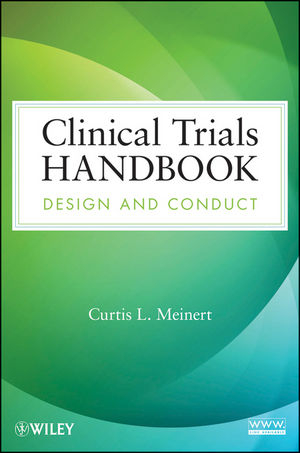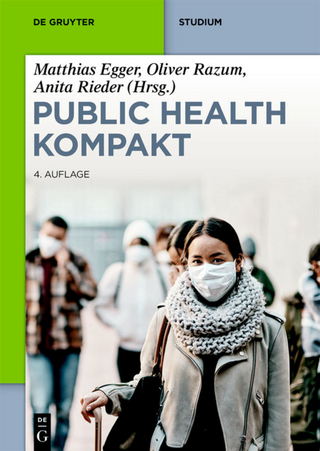
Clinical Trials Handbook
John Wiley & Sons Inc (Verlag)
978-1-118-21846-4 (ISBN)
- Titel z.Zt. nicht lieferbar
- Versandkostenfrei innerhalb Deutschlands
- Auch auf Rechnung
- Verfügbarkeit in der Filiale vor Ort prüfen
- Artikel merken
A systematic approach to all aspects of designing and conducting clinical trials
The success or failure of clinical trials hinges on hundreds of details that need to be developed, often under less than ideal conditions. Written by one of the world's leading trialists, Clinical Trials Handbook: Design and Conduct provides clinicians with a complete guide to designing, conducting, and evaluating clinical trials—teaching them how to simplify the process and avoid costly mistakes.
The author draws on his extensive clinical trials experience to outline all steps employed in setting up and running clinical trials, from budgeting and fundraising to publishing the results. Along the way, practical advice is offered while also addressing a mix of logistical, ethical, psychological, behavioral, and administrative issues inherent to clinical trials. Topics of coverage include:
Protocols for drug masking, controls, and treatment randomization
Consent, enrollment, eligibility, and follow-up procedures
Different types of sample size design and data collection and processing
Working with study centers, research staff, and various committees
Monitoring treatment effects and performance, and ensuring quality control
Data analysis and access policies for study data and documents
Clinical Trials Handbook is invaluable for practicing clinicians and trialists who would like to learn more about or improve their understanding of the design and execution of clinical trials. The book is also an excellent supplement for courses on clinical trials at the graduate level.
CURTIS L. MEINERT, PhD, is Professor in the Departments of Epidemiology and Biostatistics at the Johns Hopkins Bloomberg School of Public Health, where he served as founder of the Johns Hopkins Center for Clinical Trials. He is a Fellow of the American College of Epidemiology, the American Association for the Advancement of Science, the American Heart Association, and the Society for Clinical Trials. Dr. Meinert has focused his research on the methodological issues in clinical trials, including their design, conduct, policy, and practice. He is the author of Clinical Trials Dictionary: Terminology and Usage Recommendations, Second Edition (Wiley).
Acknowledgments xi
Preface xiii
On planning xv
Explanatory notes, focus, and conventions xvii
Abbreviations and designations xxi
I. General1
1. Terminology 3
2. Definitions 5
3. Measurement units 7
4. Trial type 9
5. Design and flow schematics 13
6. Design and operating principles 15
7. Counting and analysis rules 17
8. Multi-study umbrella name 19
9. Study name 21
II. Design Specifications25
10. Objective 27
11. Specific aims 29
12. Experimental variable 31
13. Treatment unit 33
14. Primary outcome 35
15. Outcome measures 39
16. Design synopsis 41
III. Funding45
17. Type of funding initiative 47
18. Funding: Specifications 49
19. Funding: Terminology 51
20. Funding: Type 59
21. Funding: Initiative 61
22. Funding: Period 63
23. Funding: Budget 65
24. Funding: Mode 67
IV. Treatment Groups/Treatment Administration69
25. Study groups 71
26. Comparison group 73
27. Study treatments 75
28. Test treatments 77
29. Control/comparison treatment 79
30. Placebo treatment 87
31. Sham treatment 91
32. Treatment modality 93
33. Treatment schedule 95
34. Treatment compliance measures 97
35. Protocol overrides 101
36. Protocol bailouts 103
V. Masking 105
37. Mask/masking: Definitions 107
38. Masking principles 111
39. Masking, censoring, and shielding specifications 113
40. Drug masking procedure 115
41. Drug packaging and labeling 117
42. Drug supply 121
43. Masking safeguards 123
44. Unmasking treatment assignment 125
45. Results blackouts 127
VI. Bias and Variance Control129
46. Bias control procedures 131
47. Stratification 135
48. Variance control procedures 139
49. Separations 141
VII. Treatment Assignment/Randomization 143
50. Assignment methods: Fixed vs. adaptive 145
51. Treatment assignment: Random vs. nonrandom 147
52. Randomization: Complete vs. restricted 151
53. Randomization unit 155
54. Randomization: Procedures 157
VIII. IRBs and Consents159
55. IRBs 161
56. IRBs: Models and procedures 163
57. Consent 169
58. Consent: Checklist 177
59. Consent: Disclaimers and notifications 181
60. Consent: Principles and purpose 183
61. Consent: Process 185
62. Consent: Types 189
63. Consent: Questions and answers 191
IX. Enrollment and Followup195
64. Notation 197
65. Timing conventions 199
66. Required approvals, permissions, accesses, and supplies 201
67. Start-up design 203
68. Start-up checklist 207
69. Recruitment design 209
70. Enrollment goals 211
71. Enrollment quotas 213
72. Followup: Terminology 217
73. Followup: Method 221
74. Followup: Length 223
75. Closeout design 225
76. Missed visit 229
77. Dropout 231
78. Loss to followup 235
79. Study timetable 239
80. Critical event path analysis 241
81. Eligibility criteria 243
82. Exclusions from enrollment 245
83. Eligibility and exclusions by reason 249
X. Sample Size251
84. Sample size: Design 253
85. Sample size: Specifications 257
86. Sample size: Calculation 259
87. Fixed vs. sequential sample size designs 261
88. Fixed vs. adaptive designs 263
89. Designed subgroup comparisons 265
XI. Data Collection and Processing267
90. Contact schedule 269
91. Examinations/visits 271
92. Examination/clinic visit schedule 275
93. Data collection 279
94. Data collection: Schedules and procedures 281
95. Data flow 283
96. Data processing procedures 285
97. Laboratory tests 287
98. Readings 289
99. Tissue repositories 293
100. Form design: Principles and procedures 295
101. Time window specifications 299
102. Data entry design 301
103. Data sharing: Internal 307
104. Data sharing: External 311
XII. Study Centers315
105. Center types 317
106. Centers 323
107. Center requirements 325
XIII. Investigators/Study Staff329
108. Investigator requirements 331
109. Clinic staffing requirements 333
110. Research group/Investigators 335
XIV. Committees337
111. Key Committees 339
112. Standing and working committees 341
113. Committee rules and procedures 343
114. Study officers 347
115. Study chair/vice-chair 349
116. Executive committee 353
117. Executive committee members 357
118. Steering committee 359
119. Steering committee members 361
120. Steering committee: Questions, answers, and observations 363
121. Steering committee representation models 367
XV. Treatment Effects Monitoring371
122. Treatment effects monitoring 373
123. Treatment effects monitoring: Purpose 375
124. Treatment effects monitoring: Approach 377
125. Treatment effects monitoring: Masking 379
126. Stopping rules and guidelines 381
127. Treatment effects monitoring: Questions and answers 383
128. Treatment effects monitoring committee 387
129. Treatment effects monitoring committee: Questions and answers 391
XVI. Quality Control and Assurance393
130. Quality control and assurance procedures 395
131. Performance monitoring 399
132. Training procedures 401
133. Assurances and certifications 403
134. Site visiting procedures 405
135. Audit procedures 409
XVII. Data Analysis413
136. Analysis datasets 415
137. Analysis questions regarding study results publications 417
138. Frequentist vs. Bayesian analysis 419
139. Final analysis 421
140. Subgroup analysis 423
XVIII. Publication/Presentation425
141. Publication 427
142. Publication policy 429
143. Authorship 431
144. Credits 435
145. Presentation policy 439
XIX. Policies441
146. Policies 443
147. Publicity policy 445
148. Policy on access to study documents 447
149. Policy on access to study data and results 449
150. Policy on advertising for patients 453
151. Policy on incentive payments 455
152. Policy on payment of patient-related travel expenses 457
153. Ancillary study policy 459
154. Policy on patient-care-related payments 461
155. Policy on conflicts of interest 463
156. Substudy policy 467
XX. Adverse Events469
157. Adverse events 471
158. Adverse event reporting procedures 475
XXI. Miscellaneous479
159. Key study documents 481
160. Design synopsis 483
161. Slide sets 485
162. Study CV 487
163. Study website 489
164. Study history log 491
165. Landmark events and dates 493
166. Registration 495
Appendices497
Appendix 1. Design summaries for selected finished trials 499
Appendix 2. Sample design slide sets 517
Appendix 3. Template summary worksheet 537
References 551
Index 557
| Erscheint lt. Verlag | 11.12.2012 |
|---|---|
| Verlagsort | New York |
| Sprache | englisch |
| Maße | 185 x 262 mm |
| Gewicht | 1388 g |
| Themenwelt | Schulbuch / Wörterbuch ► Lexikon / Chroniken |
| Mathematik / Informatik ► Mathematik ► Wahrscheinlichkeit / Kombinatorik | |
| Studium ► Querschnittsbereiche ► Epidemiologie / Med. Biometrie | |
| Studium ► Querschnittsbereiche ► Prävention / Gesundheitsförderung | |
| ISBN-10 | 1-118-21846-9 / 1118218469 |
| ISBN-13 | 978-1-118-21846-4 / 9781118218464 |
| Zustand | Neuware |
| Informationen gemäß Produktsicherheitsverordnung (GPSR) | |
| Haben Sie eine Frage zum Produkt? |
aus dem Bereich


